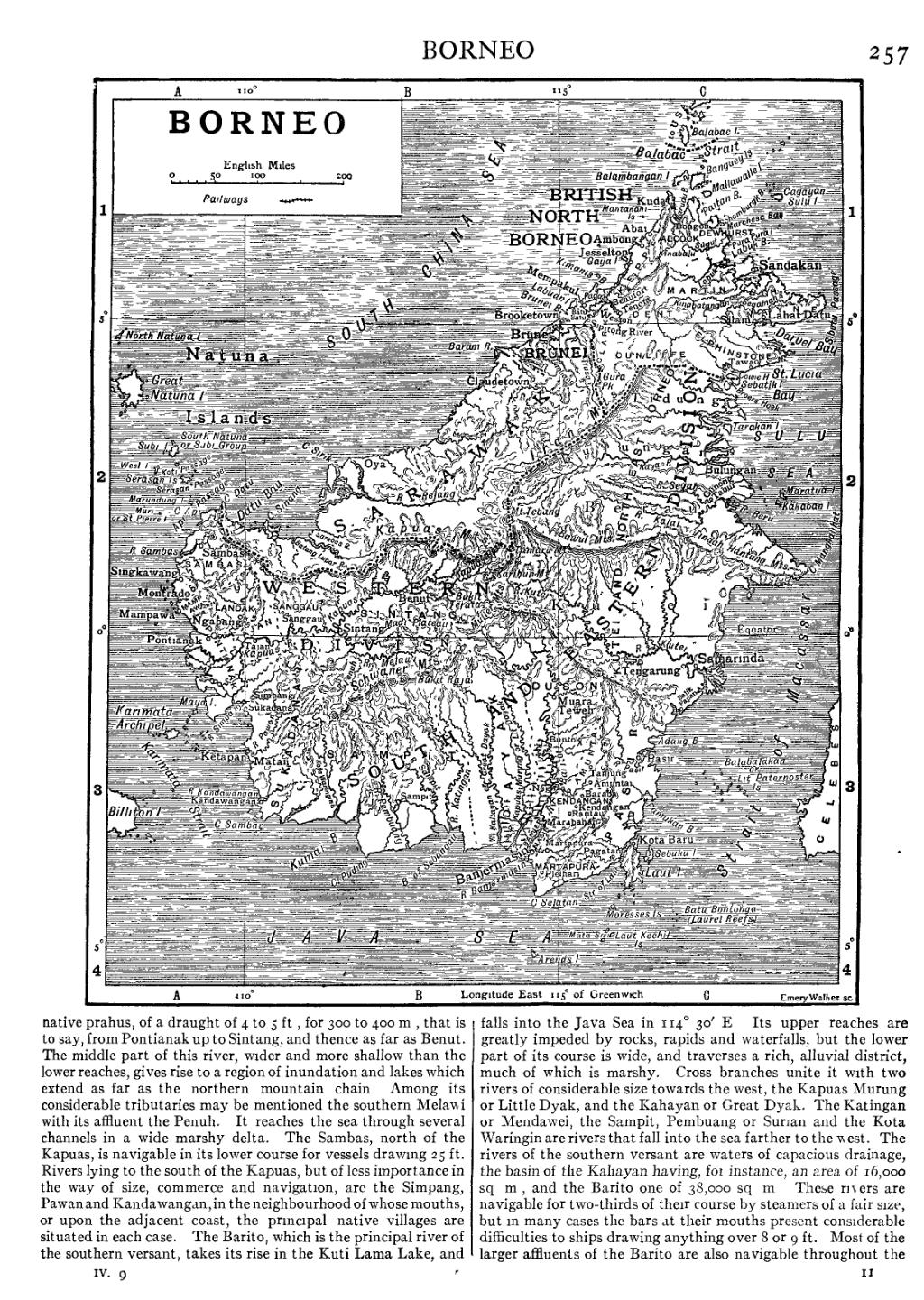
native prahus, of a draught of 4 to 5 ft., for 300 to 400 m., that is to say, from Pontianak up to Sintang, and thence as far as Benut. The middle part of this river, wider and more shallow than the lower reaches, gives rise to a region of inundation and lakes which extend as far as the northern mountain chain. Among its considerable tributaries may be mentioned the southern Melawi with its affluent the Penuh. It reaches the sea through several channels in a wide marshy delta. The Sambas, north of the Kapuas, is navigable in its lower course for vessels drawing 25 ft. Rivers lying to the south of the Kapuas, but of less importance in the way of size, commerce and navigation, are the Simpang, Pawan and Kandawangan, in the neighbourhood of whose mouths, or upon the adjacent coast, the principal native villages are situated in each case. The Barito, which is the principal river of the southern versant, takes its rise in the Kuti Lama Lake, and falls into the Java Sea in 114° 30′ E. Its upper reaches are greatly impeded by rocks, rapids and waterfalls, but the lower part of its course is wide, and traverses a rich, alluvial district, much of which is marshy. Cross branches unite it with two rivers of considerable size towards the west, the Kapuas Murung or Little Dyak, and the Kahayan or Great Dyak. The Katingan or Mendawei, the Sampit, Pembuang or Surian and the Kota Waringin are rivers that fall into the sea farther to the west. The rivers of the southern versant are waters of capacious drainage, the basin of the Kahayan having, for instance, an area of 16,000 sq. m., and the Barito one of 38,000 sq. m. These rivers are navigable for two-thirds of their course by steamers of a fair size, but in many cases the bars at their mouths present considerable difficulties to ships drawing anything over 8 or 9 ft. Most of the larger affluents of the Barito are also navigable throughout the
